Home - Business Meetings - Tips to improve your meeting culture & Symptoms of bad meeting culture
Tips to improve your meeting culture & Symptoms of bad meeting culture
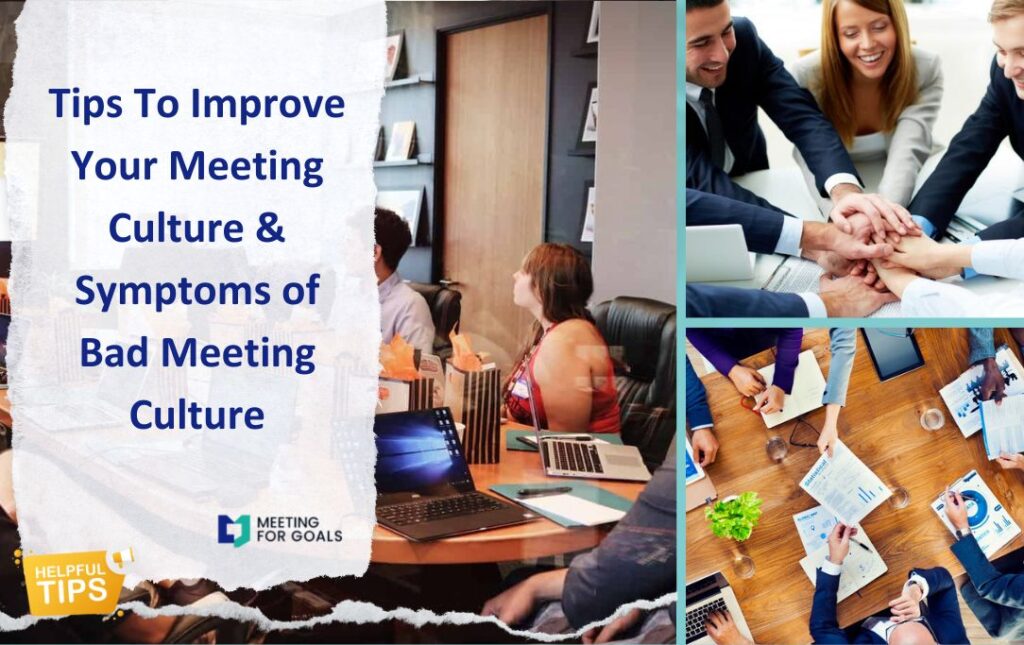
Introduction
Meetings are an essential part of every company’s life, but they can also be a huge waste of time. The good news: with some simple tweaks to your meeting culture, you can make these meetings more efficient and less painful.
Here are some tips to help you improve your meeting culture:
Table of Contents
What is Meeting Culture?
When people talk about culture, they often focus on things like the dress code or how employees interact with one another. But meeting culture is a vitally important part of any company’s culture.
Your meeting culture is the way in which you and your team members conduct meetings. The productive and the unproductive parts of meetings. That also includes team behavior during meetings.
A meeting’s purpose is to facilitate communication between employees, so if it isn’t done well, it can severely impact productivity and employee satisfaction.
In fact, meetings are responsible for nearly half of all work-related interruptions—and they happen more than once every three days!
That’s why improving your company’s meeting culture should be a top priority for you as an HR professional or anyone else who has a vested interest in keeping employees happy and productive at work.
Why is Meeting Culture So Important?
The first step in improving your meeting culture is to understand why it’s so important.
- Meeting culture affects the team. By ensuring meetings are conducted effectively and efficiently, you’re helping your employees become more productive and engaged with their work.
- Meeting culture affects the business. The quality of a company’s meetings has a large effect on its bottom line: A bad meeting can cost an organization thousands of dollars per hour while good ones can save hundreds of thousands per year—if not more!
- Meeting culture affects the customer. Quality meetings provide opportunities for collaboration, decision-making and problem solving. They improve relationships between customers, employees and leaders within an organization.
Needless to say that a bad meeting culture can be devastating to the business. A recent article by Otter.ai cited as many as 11 Million meetings are held every day. That’s staggering! See their numebrs below.
Create a Meeting Agenda
Before you can start a meeting, it’s important to define the objective or your meeting. Have a meeting agenda is essential in ensuring that your meetings are productive. If you simply start off with a meeting agenda and a meeting objective you are already ahead.
Ensure that the meeting agenda is clear and concise, it sets out who is responsible for which part of the meeting and if any preparation is to be done ahead of time.
 PRO TIP: You do not need to start a meeting agenda from scratch. Check out our FREE meeting agenda templates.
PRO TIP: You do not need to start a meeting agenda from scratch. Check out our FREE meeting agenda templates.
Send It Out In Advance (and Stick To It!)
If a meeting is going to be held, send out the meeting agenda in advance. It’s really important to have this information sent out well ahead of time so that people can prepare for the meeting.
Agendas should also clearly state the goal(s) of the meeting and include an action plan for next steps if appropriate.
When it comes time for the meeting itself, stick with your agenda! No matter how interesting or important something seems when it comes up during a meeting (and believe me—something always does).
Resist any temptation you may have to add new topics onto your agenda at the last minute or change existing topics around at all during that meeting. Resist these temptations even harder if you know there isn’t time left on your schedule after adding these new items onto your agenda.
Instead, schedule another separate session just for those new issues so everything is covered without changing up other meetings too much in order for multiple purposes related issues not get lost or forgotten about within each other’s discussions.”
Here is a great article on How to Write a Great Team Meeting Agenda.
Create and Set Boundaries
As a meeting facilitator, you can improve your meetings by setting boundaries that include:
- Time and duration. Decide on an ideal time to hold the meeting and then stick to it. If there’s no reason to extend, don’t!
- Agenda and purpose. Before you start a meeting, set expectations for attendees about what will be discussed during the session so they can prepare accordingly. Also decide on what you want from each attendee by crafting an agenda or list of objectives before the event.
- Attendees’ responsibilities. Set expectations for everyone attending so they know how they’ll contribute (e.g., sharing opinions) and whether they’re expected to ask questions or not (e.g., if this is primarily a listening session).
If some attendees are more experienced than others in terms of work experience or expertise, ensure that everyone understands their role within the group dynamic before getting started.
Also let them know how much time they’ll have at each stage so there aren’t any surprises down the road!
Choose the Right Environment
The place you choose to meet is important be it in person or remote. It’s not just about getting people together, but also about creating the right atmosphere for productive discussion and collaboration.
- Choose a quiet location. You want to avoid distracting noises that could hamper communication or otherwise distract people during meetings.
- If you are meeting in person make sure everyone feels comfortable in the room you’ve chosen for your meeting. If you’re sitting in sweltering heat or freezing cold temperatures, it’s easy to get distracted from what’s being said by feeling uncomfortable (or worse yet, unwell).
- Pick somewhere that has reliable internet access so everyone can participate fully in the meeting and share their online resources as necessary for presentations and other purposes. If you are meeting remotely then this is even more important so that you do not face any technical internet issues during the meeting.
Do NOT use Meeting Time to Solve Technical Issues
- Do not use meeting time to solve technical issues.
This is a big one. If your meetings are being bogged down by technical questions, you need to address them. The easiest way to do this is to make sure that the people who need answers are in the room when they’re discussed, but that’s not always possible.
If it’s not possible for someone needed for a particular issue to attend a meeting, have them call-in into it so they can provide input during their remote participation while still staying focused on what’s going on in person at the same time.
If there are problems with technology itself (e.g., if there’s no audio/video connection), then make sure those issues are addressed before anything else starts up again afterwards so everyone can continue with their day without feeling distracted by equipment problems!
If technical issues are too many or continuous then consider postponing the meeting till the issues are resolved.
Consider video conferencing instead of a phone call
- Video conferencing is more personal and less stressful than a phone call.
- It’s more efficient, saving you time and money on travel costs.
- It’s more professional, since it’s easier to maintain eye contact and keep your voice at an appropriate volume level.
- You get a more personal feel to the meeting if you can see the person
Be Friendly and Polite
When you’re participating in a meeting that was virtually conducted, it’s important to behave as though everyone else is there with you. That means:
- Be polite and respectful of others’ time.
- Be attentive, focused on the conversation at hand and ready to contribute when your turn comes around.
- Be friendly toward all participants.
Create a Better Meeting Culture
Meeting culture is important for any organization. A good meeting culture can help employees feel more productive and engaged, while a bad one can lead to lackluster results and disengagement.
Here are even more tips on improving meeting culture:
- Keep meetings short and focused on the task at hand. Meetings should be held only when necessary, with an agenda that includes concrete goals and objectives. Make sure everyone involved knows what they’re going to accomplish in the meeting before beginning it!
- Create an informal setting where people feel comfortable making suggestions or giving input without fear of criticism or judgment—this will help you facilitate productive conversations that result in actionable decisions!
- Make sure you take minutes of meeting during the meeting and distribute them to every one after the meeting.
Conclusion
Use these tips to improve your meeting culture. The bottom line is that if you want to improve your meeting culture and have more effective meetings.
It’s time to start paying attention to the small things—the details that can make all the difference between a good meeting experience and a bad one. Meeting For Goals helps you have productive meetings that are surely going to improve your meeting culture.
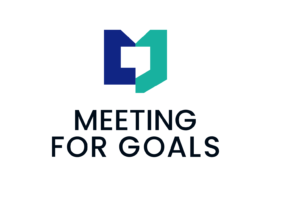
Meeting For Goals Editorial Team
Meeting For Goals is where high performing teams go to have effective meetings, achieve goals & improve morale. All in one painless workflow. Use Meeting For Goals to help guide your meetings and ensure you have the most productive meetings.

How To Reduce Meetings in the Workplace
Introduction Every manager has been in a meeting that went on way too long, or spent too much time discussing things that could have been

Why are meetings important? Their Advantages & Tools to Have Great Meetings
Introduction Meetings are an essential component of running a successful business. They help you share information, solve problems, and give everyone on your team an
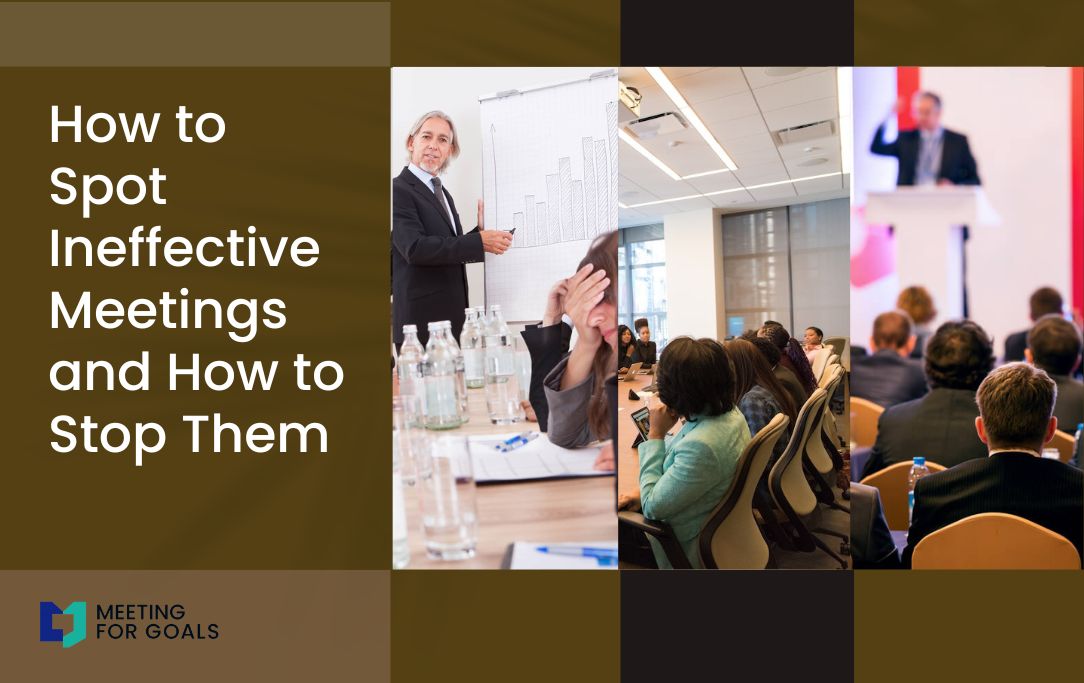
How to Spot Ineffective Meetings and How to Stop Them
Introduction Everyone knows that meetings are a necessary part of business, but few people realize how much time ineffective meetings actually waste. In an effort
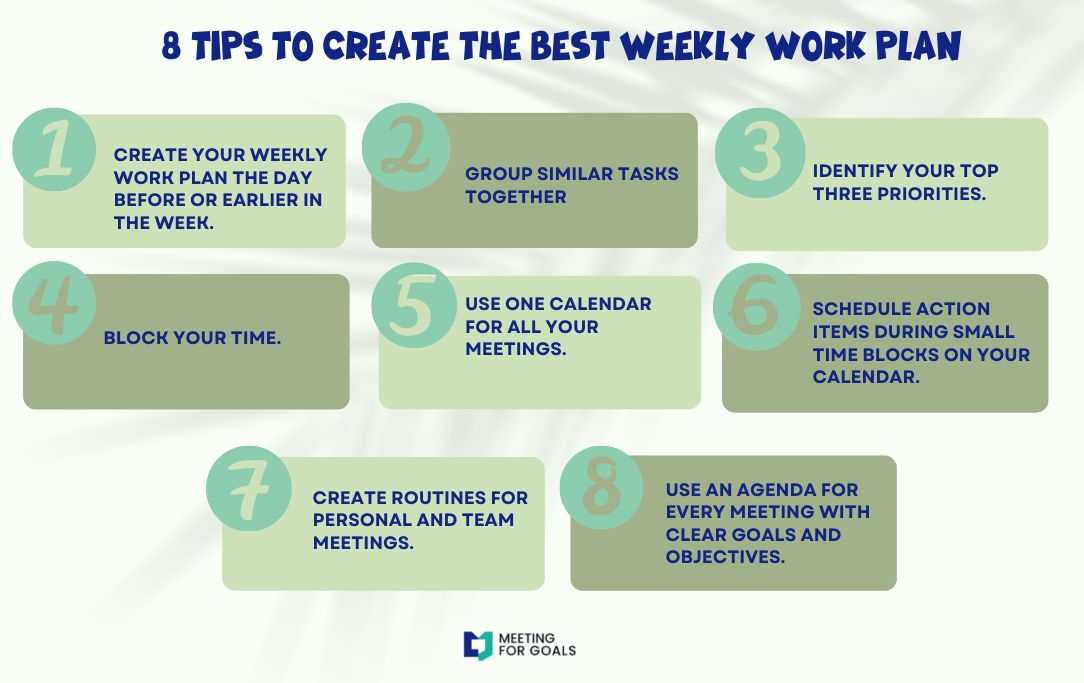
8 Tips to create the best weekly work plan
The key to being successful at work is having a weekly work plan. A weekly work plan is the most effective way to organize and
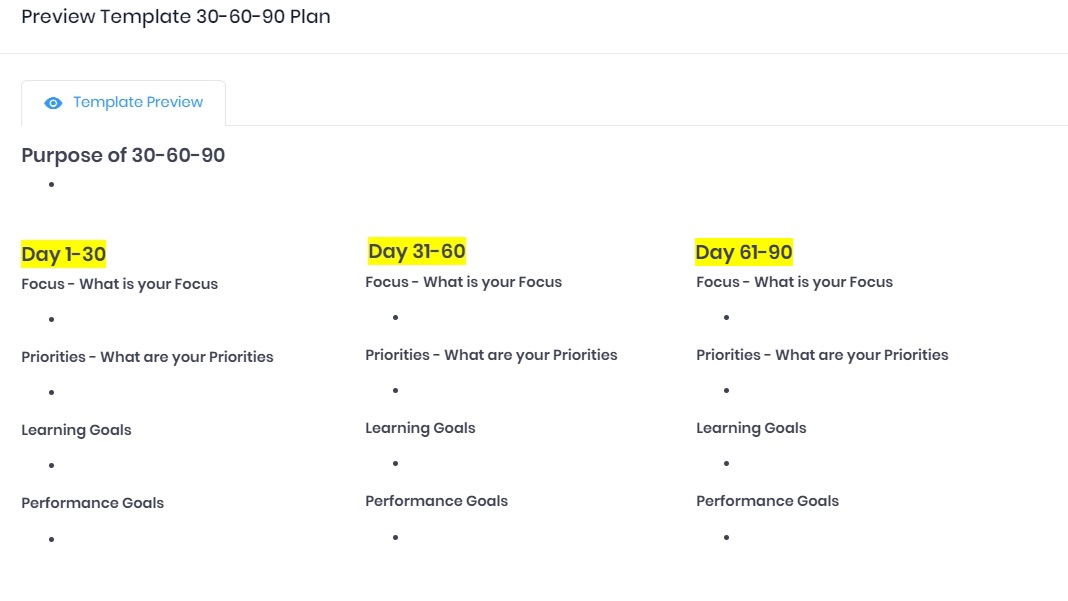
30 60 90 day plan for Managers – Template Included!
Optimize Your Employees First 90 Days: Use the 30-60-90 Day Plan While all job roles can benefit from a plan, managers commonly use a 30-60-90
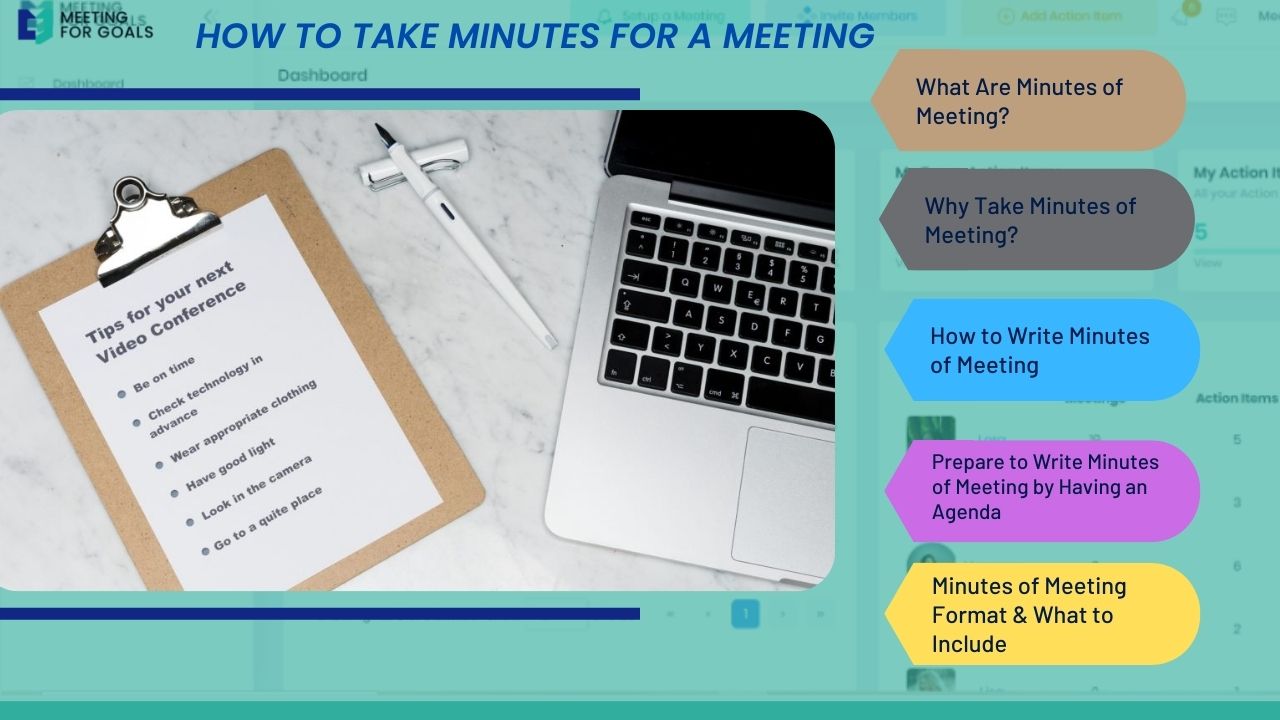
How To Take Minutes For A Meeting
When meeting with a group, it’s important to take minutes as they happen. This ensures that there is no confusion at the end of the

